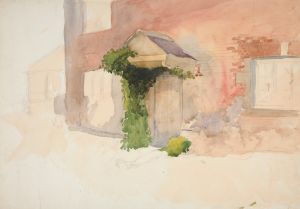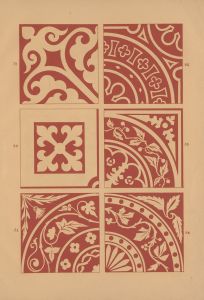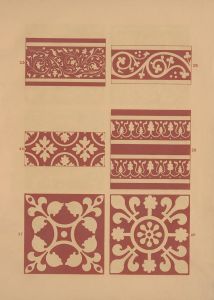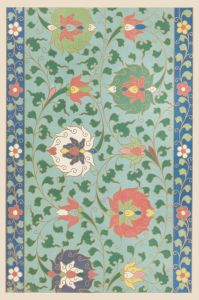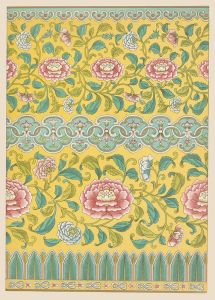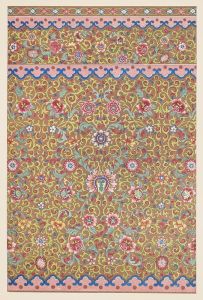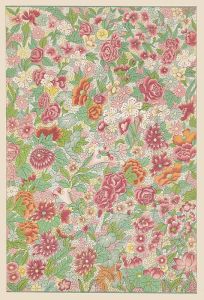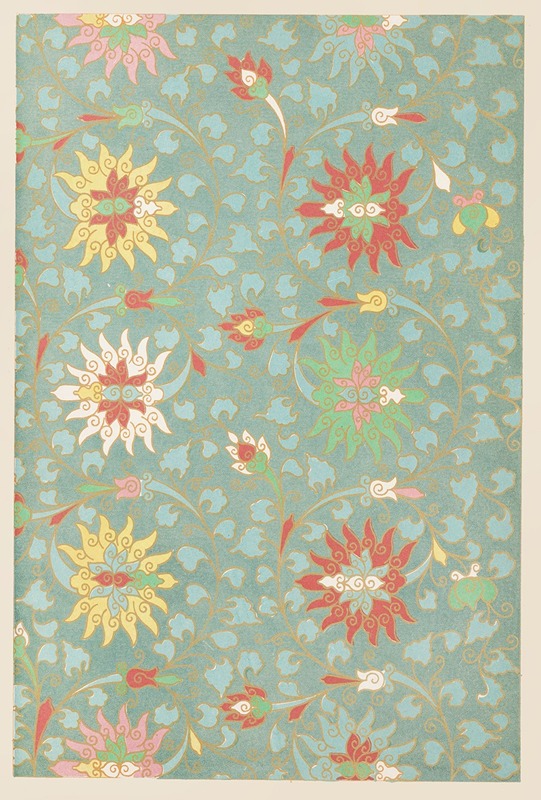
Examples of Chinese ornament, Pl.10
A hand-painted replica of Owen Jones’s masterpiece Examples of Chinese ornament, Pl.10, meticulously crafted by professional artists to capture the true essence of the original. Each piece is created with museum-quality canvas and rare mineral pigments, carefully painted by experienced artists with delicate brushstrokes and rich, layered colors to perfectly recreate the texture of the original artwork. Unlike machine-printed reproductions, this hand-painted version brings the painting to life, infused with the artist’s emotions and skill in every stroke. Whether for personal collection or home decoration, it instantly elevates the artistic atmosphere of any space.
"Examples of Chinese Ornament, Pl.10" is one of the plates from the influential design book "The Grammar of Ornament" by Owen Jones, first published in 1856. Owen Jones was a British architect and designer who played a significant role in the decorative arts during the 19th century. His work aimed to systematize and categorize design elements from various cultures around the world, providing a comprehensive reference for designers and architects.
"The Grammar of Ornament" is renowned for its detailed and colorful illustrations, showcasing patterns and motifs from different cultures, including Egyptian, Persian, Greek, Roman, Indian, and Chinese, among others. The book was groundbreaking in its approach to design, emphasizing the importance of studying historical styles to inspire contemporary design.
Plate 10, specifically focusing on Chinese ornamentation, is part of a broader section dedicated to Chinese art and design. This section highlights the intricate and symbolic nature of Chinese decorative arts, which have a long history and are deeply rooted in Chinese culture and philosophy. Chinese ornamentation is characterized by its use of motifs such as dragons, phoenixes, clouds, and floral patterns, often imbued with symbolic meanings related to prosperity, longevity, and harmony.
Jones's depiction of Chinese ornamentation in Plate 10 reflects his appreciation for the complexity and beauty of Chinese design. The plate likely includes a variety of patterns and motifs that were common in Chinese decorative arts, such as those found in textiles, ceramics, and architecture. These designs are often symmetrical and repetitive, showcasing the Chinese mastery of balance and harmony in art.
The inclusion of Chinese ornamentation in "The Grammar of Ornament" was part of Jones's broader goal to promote a universal language of design. He believed that by studying and understanding the decorative arts of different cultures, designers could create more meaningful and aesthetically pleasing works. Jones's work was influential in the development of the Arts and Crafts Movement and the later Art Nouveau style, both of which emphasized the importance of craftsmanship and the use of natural forms in design.
Jones's book, including Plate 10, remains a valuable resource for designers and historians today. It provides insight into the decorative traditions of various cultures and serves as a testament to the enduring appeal of ornamental design. The detailed illustrations and comprehensive approach to categorizing ornamentation have made "The Grammar of Ornament" a classic reference work in the field of design.
Overall, "Examples of Chinese Ornament, Pl.10" by Owen Jones is a significant piece within a larger work that has had a lasting impact on the study and appreciation of decorative arts. It reflects the rich tradition of Chinese ornamentation and its influence on global design practices.





